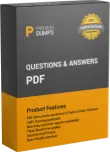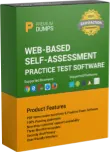
Get Palo Alto Networks PSE-SWFW-Pro-24 Exam Practice Questions - Real and Updated
Palo Alto Networks Systems Engineer Professional - Software Firewall Exam Dumps
Last Updated : Sep 23, 2025
Total Questions : 86
This Bundle Pack includes Following 3 Formats
Desktop Practice
Test software
Test software
Web Based
Practice Test
Practice Test
Questions &
Answers (PDF)
Answers (PDF)

PSE-SWFW-Pro-24 Desktop Practice
Test Software
Last Updated : Sep 23, 2025
Total Questions : 86
Total Questions : 86
$59.00

PSE-SWFW-Pro-24 Questions & Answers
(PDF)
Last Updated : Sep 23, 2025
Total Questions : 86
Total Questions : 86
$59.00

PSE-SWFW-Pro-24 Web Based Self Assessment Practice Test
Last Updated : Sep 23, 2025
86 Total Questions
Supported Browsers
Supported Platforms
License Options
$59.00
Following are some PSE-SWFW-Pro-24 Exam Questions for Review
CN-Series firewalls offer threat protection for which three use cases? (Choose three.)
Which three statements describe common characteristics of Cloud NGFW and VM-Series offerings? (Choose three.)
What is required to manage a VM-Series firewall with Panorama?
Which three solutions does Strata Cloud Manager (SCM) support? (Choose three.)
When using VM-Series firewall bootstrapping, which three methods can be used to install licensed content, including antivirus, applications, and threats? (Choose three.)
Unlock All Features of Palo Alto Networks PSE-SWFW-Pro-24 Dumps Software
Just have a look at the best and updated features of our PSE-SWFW-Pro-24 dumps which are described in detail in the following tabs. We are very confident that you will get the best deal on this platform.
Select Question
Types you want
Types you want
Set your desired
pass percentage
pass percentage
Allocate Time
(Hours: Minutes)
(Hours: Minutes)
Create Multiple
Practice test with
limited questions
Practice test with
limited questions
Customer
Support
Support
Latest Success Metrics For actual PSE-SWFW-Pro-24 Exam
This is the best time to verify your skills and accelerate your career. Check out last week's results, more than 90% of students passed their exam with good scores. You may be the Next successful Candidate.
95%
Average Passing Scores in final Exam
91%
Exactly Same Questions from these dumps
90%
Customers Passed Palo Alto Networks PSE-SWFW-Pro-24 exam













